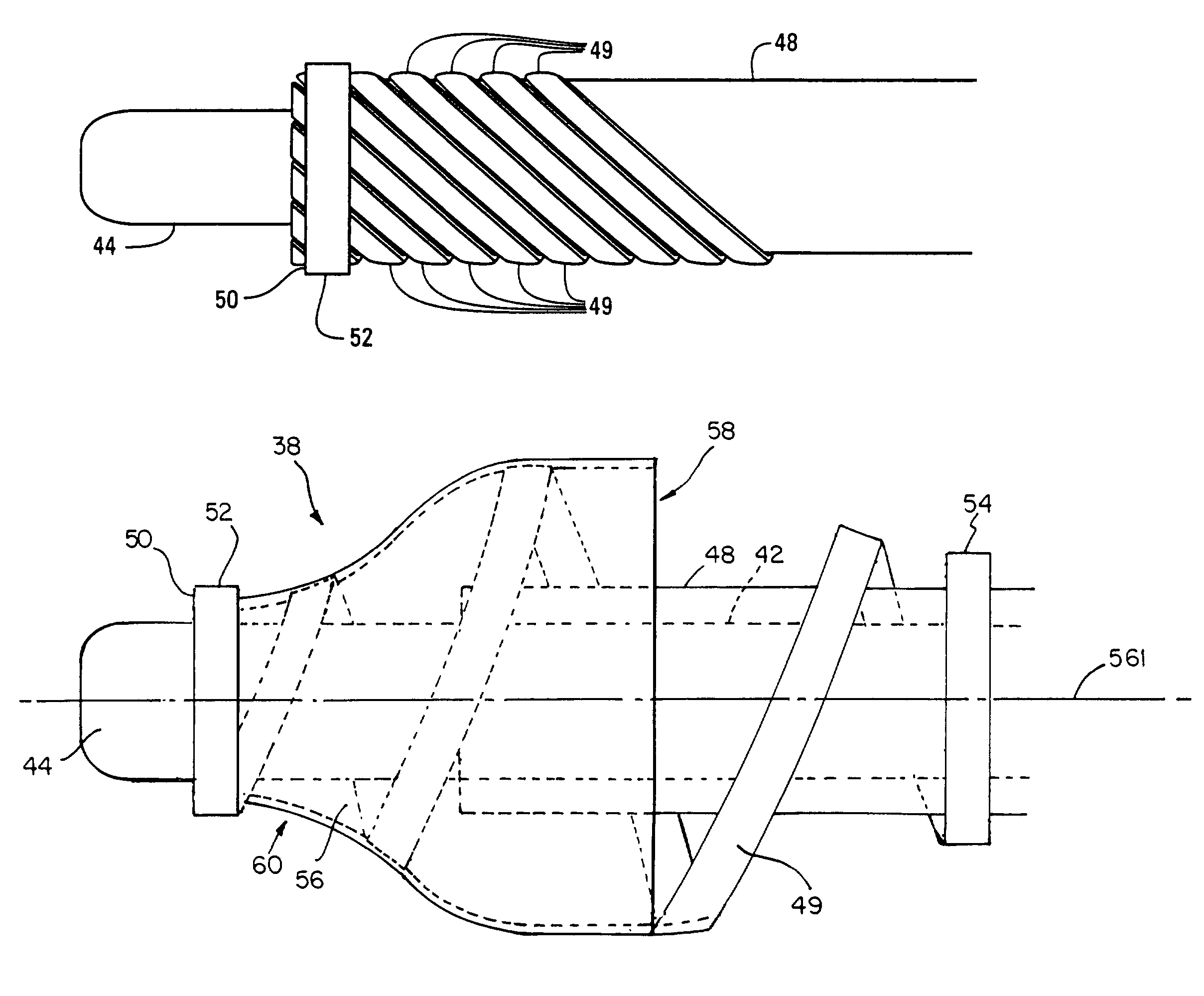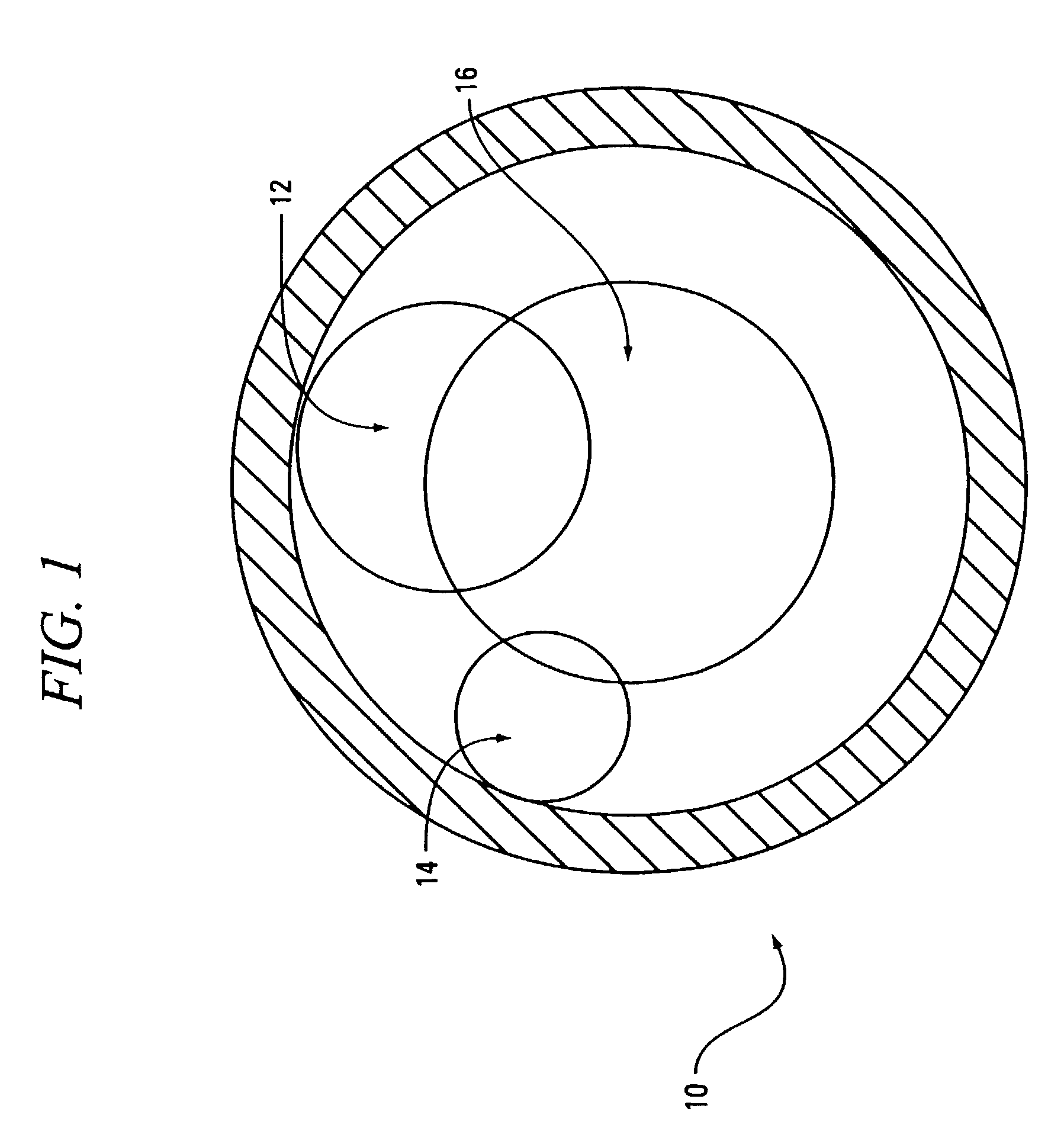Angioplasty device and method of making same
a technology of an angioplasty device and a method of making it, which is applied in the direction of blood vessels, prostheses, catheters, etc., can solve the problems of emboli, stroke, clots, and clots, and achieve the effect of increasing suction, reducing bleeding, and maximizing suction
- Summary
- Abstract
- Description
- Claims
- Application Information
AI Technical Summary
Benefits of technology
Problems solved by technology
Method used
Image
Examples
embodiment 120
[0139]In operation, the valve embodiment 120 is actuated by longitudinally moving the guidewire 44 relative to the catheter wall 48. That is, pulling the guidewire 44 in a proximal direction relative to the catheter wall 48 causes the generally planar engagement surface 126 to sealably engage the abutment 121, which prevents fluid from flowing through the circular flow channel 128. Pushing the guidewire 44 in a distal direction relative to the catheter wall 48 causes the stopper 122 to disengage from the abutment 121, which allows fluid to flow through the circular flow channel 128.
[0140]Other valve embodiments 120 capable of being actuated by longitudinal motion are also within the scope of the present invention. For example, the stopper 122 may be rotated 180 degrees so that the conically shaped surface 124 engages the abutment 121, rather than the generally planar engagement surface 126. These embodiments may be desirable because the conically shaped surface 124 will self-center ...
embodiment 38
[0151]FIG. 19 is a sectional view of an angioplasty device embodiment having a coupling device 190 with four radially spaced sockets 189. FIG. 20 is a sectional view of the coupling device 190. The coupling device 190 in this embodiment may be any device that prevents the balloon catheter 102 from rotating relative to the trap catheter bundle 100 (or translating, if used with the trap embodiment 38 described with reference to FIGS. 21 and 22). These embodiments are desirable because the trap catheter bundle 100 and the balloon catheter bundle 102 may be manufactured separately, then combined as needed. FIG. 27 depicts an alternate embodiment in which a second group of struts 49a connect the coupling device 190 to an end 191 of the trap catheter bundle 100. In operation, the trap catheter bundles 100 in FIGS. 19 and 27 may be inserted over an in-place balloon catheter 102 and then either removed along with the balloon catheter 102 or by itself, depending on the configuration of the c...
embodiment 100
[0152]FIGS. 21 and 22 are sectional views of another trap catheter bundle embodiment 100, in which the trap 38 is actuated by a translation between the guidewire 44 and the catheter wall 148. In this embodiment, a first end 180 of the struts 49 is connected to the guidewire 44 and a second end 182 of the struts 49 is attached to the catheter wall 148. Translating the guidewire 44 (i.e., moving the guidewire in an axial direction) relative to the catheter wall 148 biases the first end 180 away from the end 182. This, in turn, actuates the struts 49 between an arcuately expanded position, such as that shown in FIG. 21, and a contracted position, such as that shown in FIG. 22. Accordingly, the struts 49 in this embodiment remain generally parallel to the guidewire 44 throughout the procedure. Those skilled in the art will recognize that this actuation mechanism also could be used with the embodiments described with reference to FIGS. 1-20.
[0153]FIGS. 23A-24B are sectional views of two ...
PUM
 Login to View More
Login to View More Abstract
Description
Claims
Application Information
 Login to View More
Login to View More - R&D
- Intellectual Property
- Life Sciences
- Materials
- Tech Scout
- Unparalleled Data Quality
- Higher Quality Content
- 60% Fewer Hallucinations
Browse by: Latest US Patents, China's latest patents, Technical Efficacy Thesaurus, Application Domain, Technology Topic, Popular Technical Reports.
© 2025 PatSnap. All rights reserved.Legal|Privacy policy|Modern Slavery Act Transparency Statement|Sitemap|About US| Contact US: help@patsnap.com



